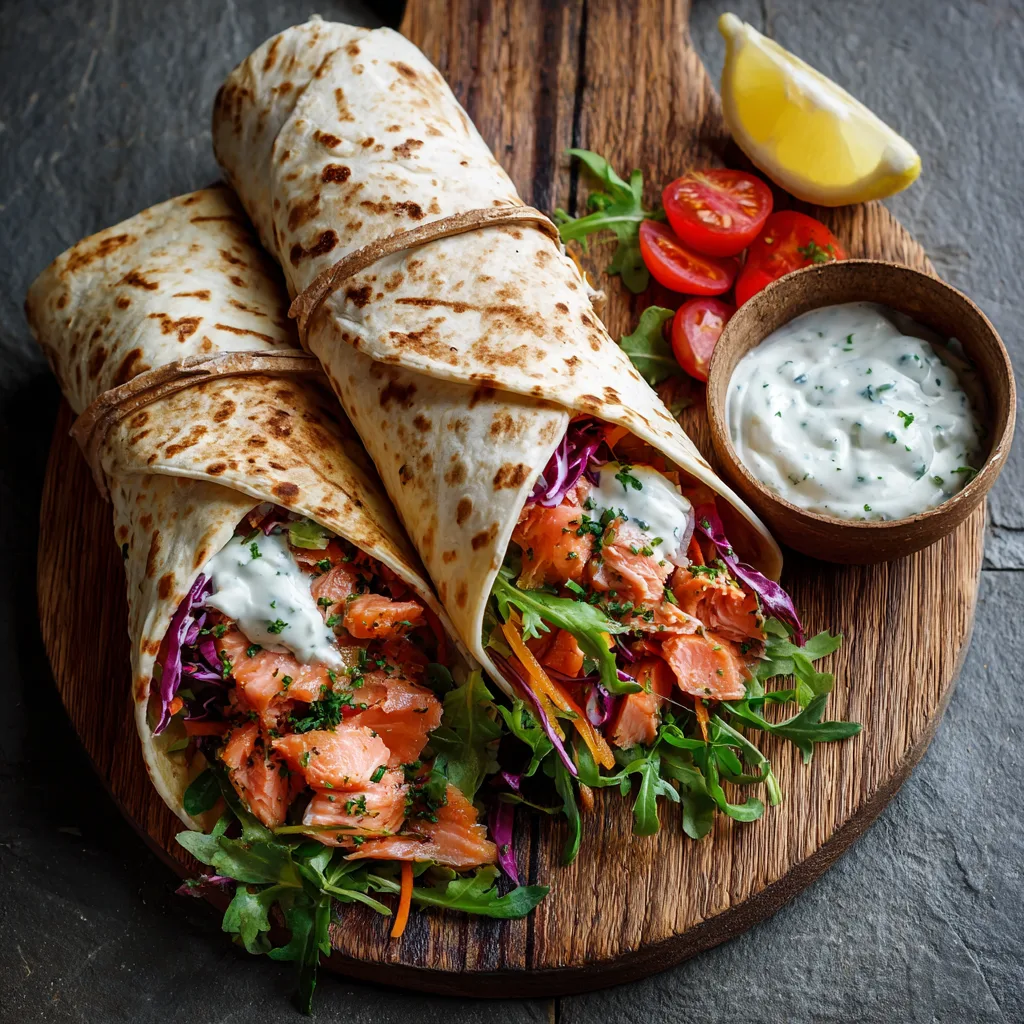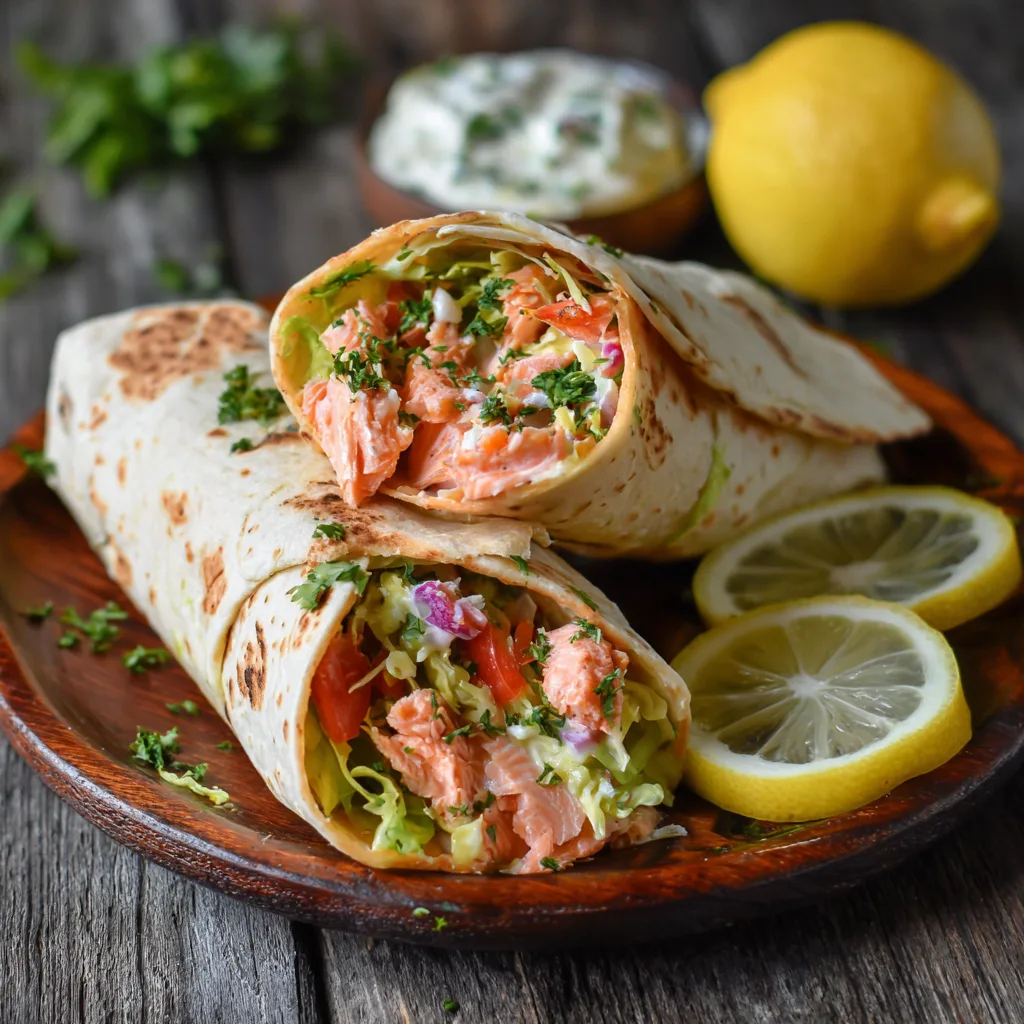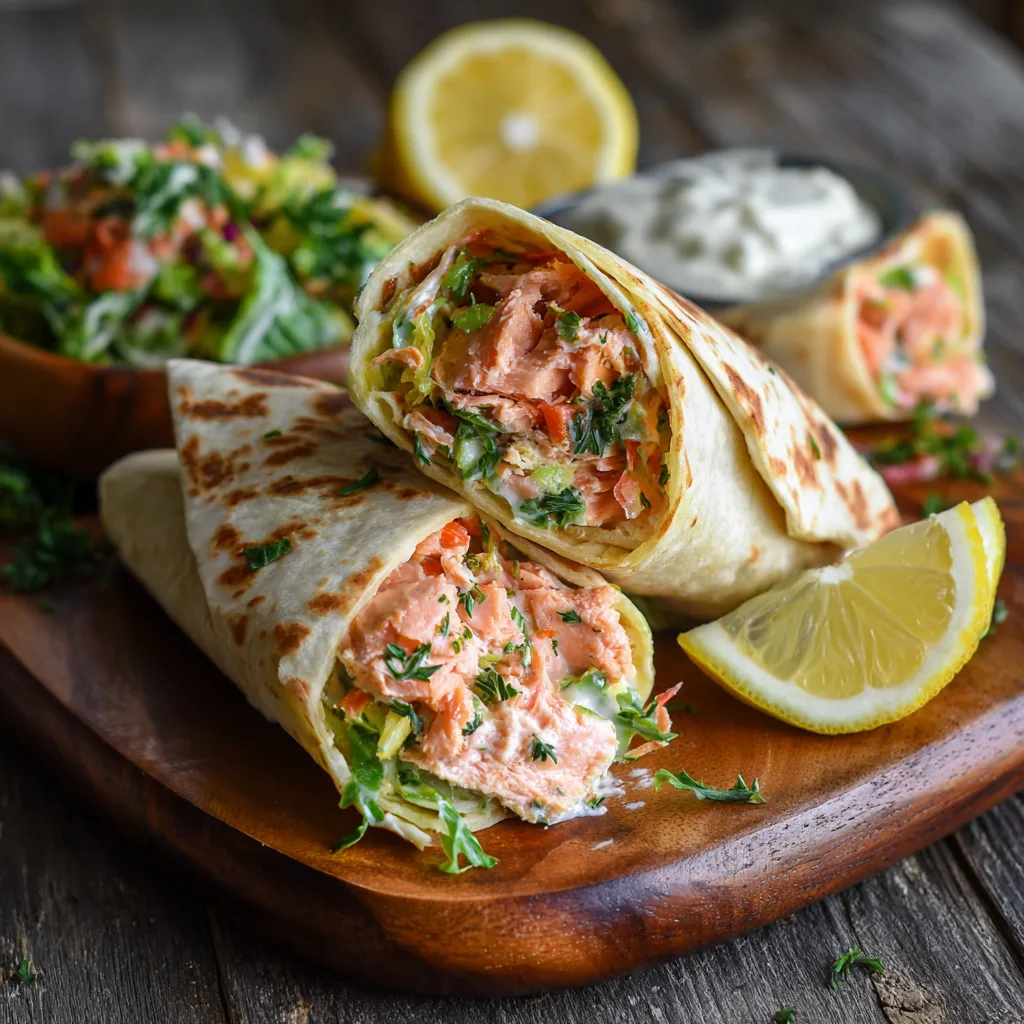Base Ingredients You’ll Need
The star of this recipe is salmon, and you have several options to choose from. Boneless fillets are the most convenient, but a side of salmon works well if you’re cooking for a crowd. Fresh salmon delivers the most delicate texture, though high-quality frozen fillets are a great alternative when fresh isn’t available. For four servings, plan on about one pound of salmon, which provides generous portions for each wrap without waste.
The wrap itself shapes the eating experience. Whole-wheat tortillas offer extra fiber and a nutty flavor, while gluten-free wraps make the dish accessible to those with dietary restrictions. Smaller, kid-sized tortillas are ideal for little hands and reduce waste. You can even find spinach or tomato-based wraps for a colorful presentation that encourages children to try new flavors.
To keep salmon moist and flavorful in the slow cooker, include a small amount of liquid such as low-sodium broth or water. Add sliced lemon for brightness and freshness. Season with a blend that suits your family—mild paprika for warmth, cumin for depth, or dill for a fresh, herbaceous note. Both The Healthy Cooking Blog and Baked Bree highlight how simple, balanced seasonings can elevate slow-cooked salmon without overpowering its natural flavor.
Flavor Profiles & Kid-Friendly Adaptations
A mild profile is often the safest starting point for families. Lemon and dill bring freshness without adding sharpness, making them a favorite for young palates. For a creamy twist, add a light yogurt or sour cream dressing inside the wrap. Slightly sweet teriyaki works well for children who prefer gentler, caramelized flavors. If your household enjoys a touch of smokiness, paprika adds depth without heavy heat.
Add-ins can completely change the wrap experience. Shredded lettuce provides crispness, while avocado adds creaminess and healthy fats. Grated carrot brings a subtle sweetness and crunch. Mild cheese can boost richness, and gentle sauces like tzatziki or light Caesar dressing keep everything cohesive. Ideas from Hungry Healthy Happy and Prep Dish show how small changes keep wraps exciting while still kid-friendly.
Dietary Variations
For a gluten-free version, choose certified GF tortillas or lettuce leaves as a fresh, crunchy wrap alternative. This keeps the dish light while maintaining all the flavor.
To make the meal Low-FODMAP or dairy-free, swap traditional yogurt or cheese for plant-based alternatives. Coconut or almond-based yogurts blend smoothly with herbs for a creamy, lactose-free dressing. By making small, thoughtful substitutions, you can keep the recipe inclusive without sacrificing taste or texture.
Preparing the Salmon in the Slow Cooker
Start by lining your slow cooker with parchment paper, as recommended by Southern Living. This small step prevents the fish from sticking and makes lifting it out effortless. It also reduces cleanup time, which is always a win for busy families. The paper forms a gentle cradle for the salmon, helping it retain its shape during cooking.
Once lined, place your salmon fillets or side directly on the parchment. Pour in about half a cup of low-sodium broth or water around, not over, the fish. Layer lemon slices on top for a fresh, citrusy lift. Season simply with salt, pepper, and your chosen spices—paprika for warmth, cumin for depth, or dill for brightness. According to Taming Twins, Baked Bree, and The Healthy Cooking Blog, these gentle flavors enhance without overpowering. Cook on HIGH for 1 hour or LOW for 2 hours, letting the slow cooker do the work while you handle your day.
To avoid overcooking, begin checking the salmon a few minutes before the end of the suggested time. The fish should flake easily with a fork but still feel moist in the center. Overcooked salmon becomes dry, so timing is key. Once it reaches this tender stage, switch the cooker to “warm” if you’re not ready to serve right away.
Assembling the Wraps
After cooking, carefully lift the salmon from the slow cooker and place it on a plate. Flake it gently into large pieces, allowing any excess liquid to drain away. This helps keep the wraps from becoming soggy.
Warm your wraps for a few seconds in a dry skillet or microwave to make them more pliable and less likely to tear during folding.
Begin with a base layer of your chosen spread—creamy yogurt sauce, light mayo, or mashed avocado. Add the salmon flakes, then layer on fresh vegetables like lettuce, cucumber, or grated carrot. Sprinkle with optional cheese for extra richness.
When folding, start by tucking in the sides, then roll tightly from the bottom upward. This technique keeps the filling contained and the wrap secure, even for little hands.
Meal-Prep & Serving Ideas
For make-ahead convenience, you can assemble the wraps in the morning or the night before. Wrap each one tightly in foil or plastic wrap and store them in the fridge. They’ll be ready to grab for lunchboxes, picnics, or quick dinners.
Serve your salmon wraps with simple, complementary sides. A crisp green salad adds freshness, while couscous or a quinoa salad offers extra texture and nutrition. Even a bowl of vegetable soup pairs beautifully for a well-rounded, satisfying meal.
Storage Tips
If you plan to store leftover wraps, keep them fresh by wrapping them tightly in foil or plastic wrap. Place them in an airtight container before refrigerating. According to Hungry Healthy Happy, it’s best to enjoy them within one to two days. Beyond that, the tortilla can become soggy, and the vegetables may lose their crispness. Storing the salmon and wrap components separately helps preserve texture, allowing you to assemble them just before eating.
Freezing fully assembled wraps isn’t ideal. The freezing process changes the texture of the tortilla and can make vegetables watery once thawed. If you must freeze, store only the cooked salmon. Wrap it tightly in freezer-safe packaging and use it within one month for the best flavor and quality. When ready, thaw it in the fridge before reheating and assembling fresh wraps.
Reheating Best Practices
To maintain texture and flavor, reheat salmon gently. A toaster oven works well for warming the fish without drying it out. If you’re short on time, use the microwave in short bursts, checking often. Avoid reheating fully assembled wraps to keep tortillas from becoming chewy or soggy.
Food Safety
Food safety is essential when serving fish. According to Hungry Healthy Happy, salmon should reach an internal temperature of at least 145 °F (63 °C) to ensure it’s fully cooked and safe to eat. Use a kitchen thermometer to check the thickest part of the fillet. If storing leftovers, refrigerate them promptly within two hours of cooking. When reheating, make sure the salmon is hot throughout before serving. By following these guidelines, you can enjoy your salmon wraps with confidence, knowing they’re both delicious and safe.
Frequently Asked Questions
What’s the easiest way to cook salmon in a slow cooker?
For moist, flaky results, line your slow cooker with parchment paper, add a small amount of liquid, and season the fish. Cook on LOW for about 2 hours or HIGH for roughly 1 hour. This gentle method, as shared by Taming Twins, Baked Bree, and The Healthy Cooking Blog, locks in flavor and prevents dryness.
Can I use frozen salmon?
Yes, but make sure to fully defrost it before cooking. Taming Twins recommends thawing in the refrigerator overnight to ensure even cooking and ideal texture.
How do I prevent the wraps from getting soggy?
Assemble them just before serving, or store the salmon, vegetables, and wraps separately. Warming the wraps right before adding the filling also helps maintain structure.
Can these wraps be made gluten-free or dairy-free?
Absolutely. Use certified gluten-free wraps for those avoiding gluten. Swap traditional sauces for dairy-free alternatives like coconut yogurt or plant-based spreads.
Is parchment paper safe in a slow cooker?
Yes. According to Southern Living, parchment paper can handle temperatures up to around 420 °F, well above a slow cooker’s maximum of about 300 °F. It also keeps food from sticking and makes cleanup quick and easy.




